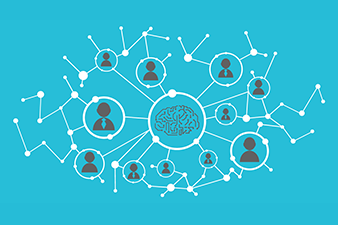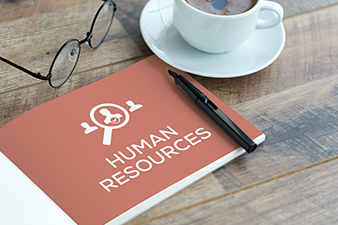
One of the best ways for HR organizations to create business impact is through a strong, efficient HR delivery model. Tremendous innovation in HR services has created opportunity to transform employee experiences and add greater value to the business. Yet, too many HR leaders are working within an outdated framework that seems to be collapsing under its own weight.
There is a better way forward. The siloed and vertical model of traditional HR can be left behind and a new, more responsive HR model built in its place.
A more proactive, effective service design delivers dynamic and sustainable results. With some planning, HR leaders who adopt this new model can transform their offerings, better deploy their staff, and redefine their overall roles within their organizations.
A New Design for HR Services
HR is increasingly being recognized as a powerful strategic resource. Yet, it is still surprising how many organizations have not adopted the best practices approach—or have only done so in a haphazard manner.
To promote and design this new, more effective service discipline, you’ll need to fully understand how it contrasts with the traditional model, how the model is structured, and how it benefits your organization, both directly and indirectly.
A Three-Part System
The optimal HR structure consists of three key components: First, field HR, including HR business partners, to provide strategic support to business leaders and managers, on site through business partners; second, Centers of Expertise (COE) for functional or technical support in areas like total rewards and talent acquisition and leadership development; and third, service centers to support the organization’s main employee base. Figure 1 outlines the roles of each of the three components.
Figure 1: Three Key Components of HR

With this three-part foundation, problems are more easily or quickly resolved—since the right HR staff are deployed at the right juncture. For example, if a sales team is not working well, field HR staff coordinate with the business manager to identify solutions—perhaps compensation needs to be aligned with desired outputs. The business partner then works with the COE to devise and roll out the solution plan, and the service center answers questions about the plan.
The result is a more nimble, more proactive, and more customer-centric system with clearly defined roles and clear accountability. Compare this to the traditional model in which HR responds to issues via a series of fire-fighting activities.
Lower Costs, Greater Efficiency
A key benefit of a transformed HR model is lower costs. By providing services in a way that optimizes different teams’ skills, the process is more cohesive and economical. Administrative services are supplied by an efficient service center; COEs provide skilled and programmatic support for more technical requirements; and field staff provide relationship management and senior leadership support.
These services are also more efficient in terms of timeliness, appropriateness, quality, and so on. Many of our clients’ initial objectives were lower costs, but ultimately their operation improved its service overall. Of course, that carries a value—but perhaps not one as easily measured in dollars.
Another tangible advantage is leveraging data and insights to improve the employee experience. With the right technology and the right assignment of responsibility, there is better ownership of data and—this is crucial—the resources to analyze it. Many COEs have built up data analytics as a key capability and thus, a powerful repositioning of how HR supports the overall business.
Better Customer Experience
A key strength of a new HR service model is its ability to enable better, more positive experiences for your organization’s employees and customer groups.
The new model provides clear entry points for any query. Employees can go to the service center; business leaders with a strategic challenge can consult their HR business partner and tap into the COEs; and business managers and supervisors can partner with the field staff. An improved quality of services means less time spent “answer shopping” in seeking an optimal solution.
Designing and Implementing the New Model
Redesigning and assembling a best practices HR framework is not an easy transition, which may be why so many organizations shy away from it. Despite the obvious benefits, they tend to fix a little bit here and there, with equally spotty results.
One key challenge is the lack of experience in designing and integrating the various pieces of this model. Redesigning a process itself might not sound hard, but now you’re redesigning several processes, and you’re also harmonizing policies, figuring out the integrations and the dependencies, and so on. Suddenly, it’s a bit like a Rubik’s cube, and without experienced practitioners to guide the transition, it can feel like a risky endeavor.
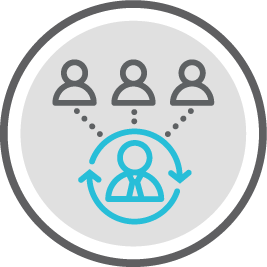 Step 1: Enlisting Experienced Leaders and Partners
Step 1: Enlisting Experienced Leaders and Partners
The first step is to make sure you’ve got experienced staff—people you’ve either hired who have done it elsewhere or a respected internal leader who complements their skills with experienced, proven external partners. Without one of these two options, it might take longer, be costlier, and create more stress. Getting it wrong is expensive, and you have one shot to demonstrate a win.
 Step 2: Defining Responsibilities
Step 2: Defining Responsibilities
The next element of the process is clearly delineating ownership of work: What’s done in the COEs, what’s done in the service center, and what’s done by field HR. Specific details are crucial in ensuring unnecessary administrative activities are pulled from the field, which is really the basis of the model’s success.
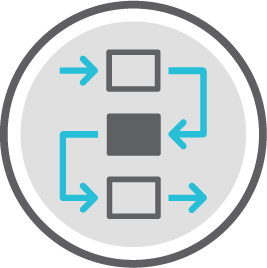 Step 3: Streamlining Systems and Procedures
Step 3: Streamlining Systems and Procedures
The next critical factor is harmonizing policies and processes. For example, it’s not unusual to have several different leave or paid-time-off plans. We recently worked with a company with more than 400 of these and brought them down to a dozen. The key is to ensure the number is manageable. Processes also need to be optimized and redesigned so that they work effectively with the new model and the technologies.
 Step 4: Tailoring Organization Structure
Step 4: Tailoring Organization Structure
It is important that a transformative HR service model also fits the company and its operations. You cannot just take a theoretical approach and drop a template onto different enterprises. A retail organization requires a different structure to a services business; a fragmented enterprise can’t be treated the same as a centralized enterprise.
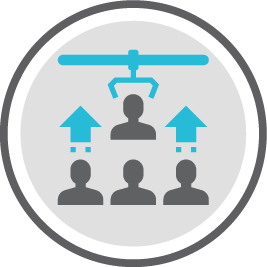 Step 5: Aligning Roles with Abilities
Step 5: Aligning Roles with Abilities
It’s tempting to redeploy your old HR team into the new roles, but it is critical that new HR positions are aligned with the staff’s relevant skill sets. We know of one organization (not our client at the time) that redeployed existing staff and experienced turnover of the entire HR team within eight months of launch. That’s a risky gamble. You must be able to leverage job specialization. The COE needs technical specialists; the service center needs customer-focused transactional or service specialists; and field staff need to be relationship specialists and problem solvers. You cannot magically transform a transactional specialist into a problem solver. It won’t work.
 Step 6: Managing Change and Communication
Step 6: Managing Change and Communication
Last but absolutely not least, don’t neglect communications, change management, and training. The biggest source of resistance is often within the HR group rather than outside it. You must think and plan well ahead, using internal communications, change management guidance, as well as learning and development programs to fill the gaps.
Anticipating and Managing Problems
Errors are an unavoidable part of any process. Mistakes in building a new HR model tend to fall into three camps. The first, which we see often, is not getting the right people into the right job. Matching experience and skills to the new requirements is crucial.
A second mistake is allowing administrative work to remain in the field. Again, without the right people in the right jobs, you end up with generalists in the field who are not skilled enough to offer the strategic support their new role promises. Administrative work should move into the service center so staff can focus on strategic business partnering.
A third common mistake is allowing employees to follow traditional patterns and old habits in getting HR support. In a redesigned model, you need to encourage employees to use it as planned, such as using the service center rather than trotting down the hall to see John or Brenda. One solution is to ensure John or Brenda recognizes their redefined role—and getting them to push employees to the service center.
Supporting the Model with Tools and Technology
A best practices HR model is supported by robust service management technology. Many platform suites offer knowledgebase, case management, portal components, and interaction channels such as chat.
Case management offers ticketing, tracks questions, runs data and analytics, and provides usage reports. With the right integrations, you can tap into all the indicative data you need. The knowledgebase can help employees directly through self-service or serve as the knowledge repository for the center to provide accurate responses to callers.
Portals present a user-friendly entry point for employees. Yet, the portal’s real power is its integration with the Human Capital Management system. With the right group structure set up, you can view affiliations and the division of individual employees, which relate to their specific policies and relevant procedures. An example of how service management technologies work together is shown in Figure 2.
Figure 2 – Integrated Service Management Technologies
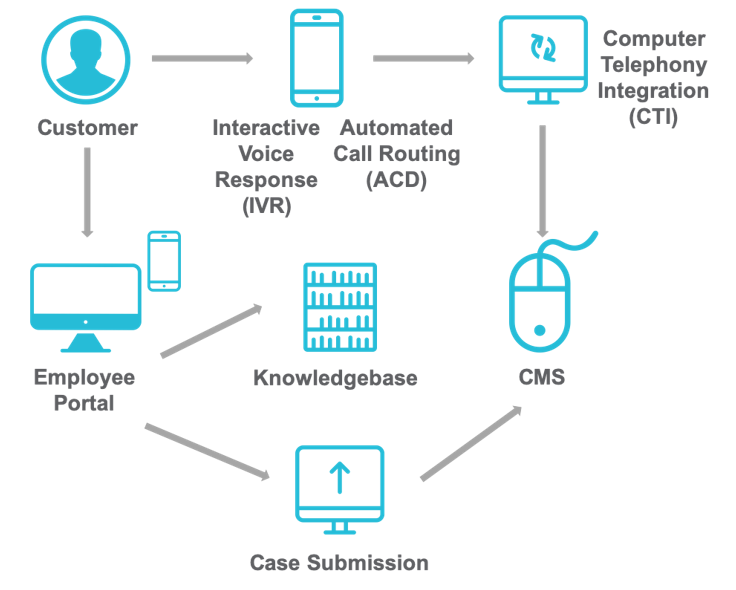
Now that you are familiar the basic components that comprise service management technologies, selecting the right vendor for your organization requires a deliberate, disciplined approach.
Gathering the functional and technical requirements for the organization will act as the foundation to your future state vision. This is typically obtained through focus groups and interviews with key users and IT personnel. Fully documented requirements will lead to a well-developed and thought-out RFI/RFP, while in parallel, the requirements can also inform initial vendor identification. When building out the RFI/RFP, typical sections will include a high-level design overview, “use” case examples, and business requirements by process. Lastly, developing a robust rubric or scorecard to evaluate vendors helps remove “gut feel” or the “chance” that the vendor will fulfill your expectations. Be sure to include a live demonstration of the tool as part of the vendor evaluation. Below includes, but is not limited to, additional key criteria when scoring vendors:
- Desired functionality
- One-time and recurring costs
- Time and speed to implement
- Upgrade cycles
- Growth and scale of the platform
- Add-on modules

Implementing your technology is the final step toward a more effective HR delivery model. As with most technology implementations, plan on a strong project team to lead the effort. Typical steps often include, but are not limited to, installing and configuring the system (iterative), integrating the solution with other relevant technologies, testing the technology with use cases, training both the fulfillers and end-users, and finally deploying the solution.
Supporting the Model with the Right Skill Sets
Your service center needs employees with strong customer service skills and technology skills. In truth, an HR background is not that important in the service center, as questions are primarily answered via technology.
In the field, HR staff need to understand the business and develop strong relationship skills to leverage their business acumen and strategic thinking. Their role is to interact with business leaders, understand their problems, and come up with a solution.
The COEs are where HR technical skills are really fostered and where you can justifiably invest in higher value-add roles—compensation specialists, benefits plan designers, talent acquisition experts, sourcing experience, etc.
Taking the Leap and Reaping the Rewards
The promise of a new, modern HR services model is greater than the sum of its parts, and the final benefits eclipse the offerings of a traditional HR system. Making this powerful new model a reality can be done viably and effectively through leadership, planning, and attention to detail.
By adopting the new model, implementing its new structure, enlisting the right talent, and engaging in ongoing fine-tuning, you can revolutionize your team, your results, and your overall organization.
A new HR services model is more than an actionable theory. It is a powerful productivity tool and strategic business advantage. Your leadership can make it a reality.
How We Can Help
ScottMadden has helped lead many clients across industries through transformation to a leading practices HR delivery model and would be happy to talk about the unique challenges involved with yours. For more information, please contact us.










